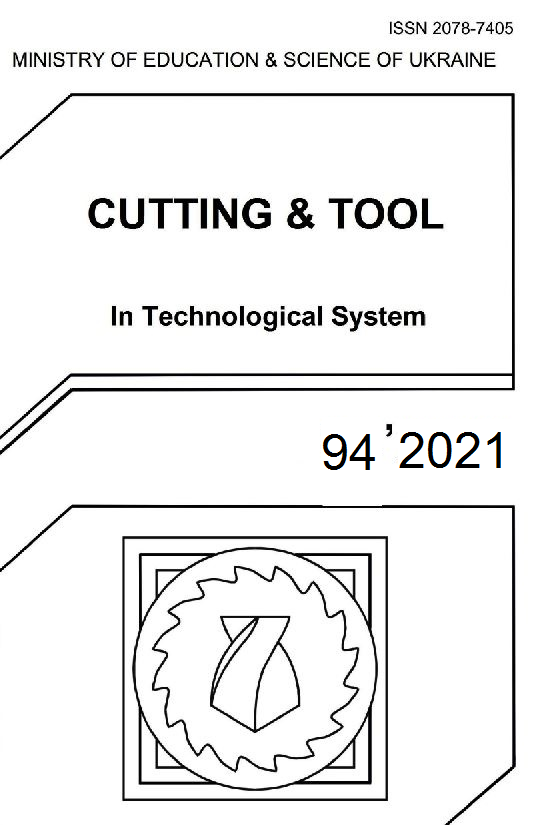THE EFFECT OF THE CIRCULAR FEED ON THE SURFACE ROUGHNESS AND THE MACHINING TIME
DOI:
https://doi.org/10.20998/2078-7405.2021.94.08Keywords:
machining time, surface roughness, rotational turningAbstract
The surface roughness is analysed in different feeds and turning procedures (rotational and conventional) in this paper. Cutting experiments were made on different cutting speeds and feed rates with 2 cutting tool with helical edge geometry and 1 traditional turning tool. The measured 2D surface roughness values were compared between the different cutting tools. The benefit of the circular feed application is showed by the decrease of roughness parameters and machining time.
References
Kundrak, J., Deszpoth, I., Molnar., V.: Comparative Study Of Material Removal In Hard Machining Of Bore Holes. Tehnicki Vjesnik-Technical Gazette 21 (1), pp. 183–189., 2014
Varga, G., Ferencsik., V.: Examination of 3D Surface Topography of Diamond Burnished C45 Workpieces. Rezanie I Instrumenty V Tekhnologicheskih Sistemah 90 (1), pp. 153–162., 2019
Qehaja, N., Jakupi, K., Bunjaku, A., Bruçi, M., Osmani, H.: Effect of Machining Parameters and Machining Time on Surface Roughness in Dry Turning Process. Procedia Engineering, Vol 100, pp. 135-140, 2015
Niaki, F. A., Haines, E., Dreussi, R., Weyer, G.: Machinability and Surface Integrity Characterization in Hard Turning of AISI 4320 Bearing Steel Using Different CBN Inserts. Procedia Manufacturing, Vol 48, pp 598-605, 2020
Berenji, K. R., Kara, M. E., Budak, E.: Investigating High Productivity Conditions for Turn-Milling in Comparison to Conventional Turning. Procedia CIRP, Vol 77, pp. 259-262, 2018
Kundrák, J., Gyáni, K., Deszpoth, I., Sztankovics, I.: Some topics in process planning of rotational turning. ENGINEERING REVIEW 34:1 pp. 23-32., 2014
Downloads
Published
Issue
Section
License
Copyright Notice
Authors who publish with this Collection agree to the following terms:
1. Authors retain copyright and grant the Collection right of first publication with the work simultaneously licensed under a Creative Commons Attribution License that allows others to share the work with an acknowledgement of the work's authorship and initial publication in this Collection.
2. Authors are able to enter into separate, additional contractual arrangements for the non-exclusive distribution of the Collection's published version of the work (e.g., post it to an institutional repository or publish it in a book), with an acknowledgement of its initial publication in this Collection.
3. Authors are permitted and encouraged to post their work online (e.g., in institutional repositories or on their website) prior to and during the submission process, as it can lead to productive exchanges, as well as earlier and greater citation of published work.

